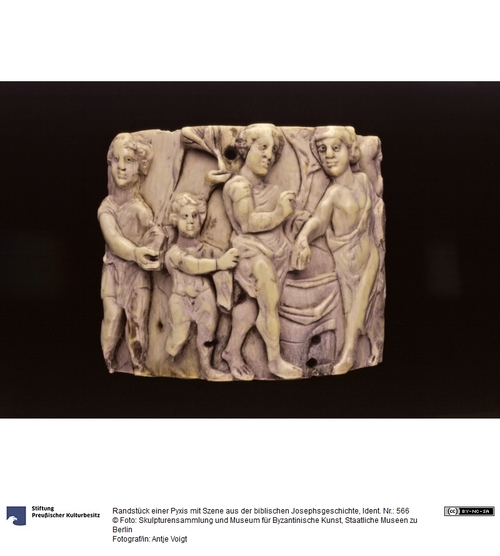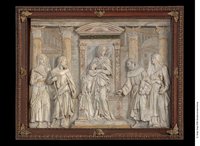Im Alten Testament wird aus der Kindheit des Patriarchen Joseph berichtet (Gen 37). Da seine Brüder eifersüchtig auf ihn sind, stecken sie ihn in einen trockenen Brunnen und verkaufen ihn an Händler aus dem Stamm der Ismaeliter. Diese bringen ihn nach Ägypten. Erhalten ist der halbe Rand einer Dose, einer sogenannten Pyxis. Dargestellt ist links der kleine Joseph zwischen zwei Brüdern, rechts einer der Ismaeliter vor dem Brunnen, in dem Joseph zuvor versenkt war.
Entstehungsort stilistisch: Oströmisches Reich
Entstehungsort stilistisch: Syrien/Ägypten
en

